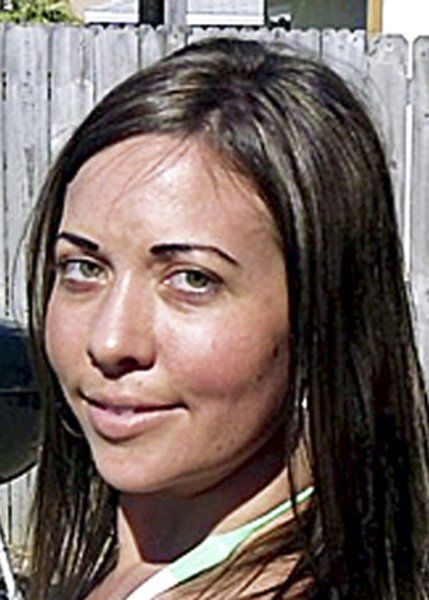Around the Banks: A trip down memory lane
Published 9:00 am Saturday, April 7, 2018

- Johnny Bullard
“Backward turn backward, Oh time in your flight. Make me a child again just for the night.”
So many times, readers of my column tell me they enjoy my column because it brings back fond memories. I was thinking about the Hamilton County of 50 years ago in 1968, and I realized how much change had taken place since that time.
Trending
In 1968, at this time of the year, Lyndon Baines Johnson was still President of the United States, but he had announced he would not seek re-election because of something called the Vietnam War. Richard M. Nixon would narrowly defeat Hubert Humphrey in 1968, due partially to the fact that George Wallace, a third-party candidate summarily swept five states of the Old Confederacy with a strong margin.
In 1968, at this time of the year, the nation received the shocking news that the great Civil Rights Leader, the late Rev. Dr. Martin Luther King, Jr., had been killed by an assassin’s bullet in Memphis, Tennessee. Many thought his death would bring an end to the movement, but they were mistaken.
Later in the summer of 1968, Democratic Presidential candidate Robert F. Kennedy would be assassinated.
In Hamilton County, Hamilton County High School was in its second full year of consolidation. The school was virtually segregated with very few African American students in attendance. That would change in two more years. By 1970, the all-black schools had been shut down, and full consolidation of the schools had taken place as a result of the Title IX Order of the Civil Rights Act of 1964 being enforced.
At either end of Hamilton County, North Hamilton Elementary and Jerry Jackson Elementary at Jennings and South Hamilton Elementary and Carver Elementary at White Springs, included grades 1-8. Public Kindergarten would be included in 1969, and would be the first fully desegregated classes in the county. My brother, Jerry Lawrence Bullard, was in that class at South Hamilton Elementary taught by the late Jimmie Crawford-Jacobs.
In Jennings, Mr. Owen Hinton Jr. was the principal and at South, Mr. Hal M. Worth was principal. Mr. Harry T. Reid was the School Superintendent and Mr. M.L. Powell was the principal at Hamilton County High School. Mr. M. Sanders was the principal of the all-black J.R.E. Lee High School.
Trending
Then, Occidental Chemical Company, which was part of the parent Company, Occidental Petroleum Company, owned by the late Dr. Armand Hammer Jr. was employing large numbers of skilled and unskilled laborers at its White Springs Plant. In addition, the company employed several ladies who were part of its clerical and financial staff. The late Mr. Maywood Chesson, was the first CEO of, then, Occidental, and many family incomes and prospects of staying at home and living at home, increased as a result of the presence of, then, Occidental Chemical Company.
Tags for automobiles were numbered according to the population of that county, I remember vividly, Columbia County was 29, Suwannee was 31, and Hamilton was 56. I still have some of those tags at the farm, and I still wish the State of Florida would use this number system for its tags.
Hamilton County had a population of approximately 7,800 people in 1968.
Agriculture and the timber industries, then, as now were very big factors of the local economy. Unlike now, the major cash crop for the farmers was flue cured tobacco. Tobacco markets were located in Jasper, Live Oak, Lake City, Madison and High Springs, here in the north central Florida area. Large amounts of company-owned and privately-owned timber lands were owned or leased to: Owens Illinois Corporation, ITT Rayonier, or Continental Can Corporation.
However, the tide of agricultural related jobs shifted dramatically when the phosphate industries moved into the county.
At White Springs, the historic White Sulphur Springs were still in operation, and the Stephen Foster Memorial were still attracting a goodly number of tourists, though not nearly the number once attracted before the advent of the Interstate Highway system.
Family-owned grocery stores were still very much a part of the economy in those days and, of those, several still delivered groceries to their customers including: Carver’s Grocery Store in White Springs, Mallory’s in Jasper, and I am sure, at least one grocery business in Jennings.
Jasper had two home-owned pharmacies in operation, Kayo’s Pharmacy, owned and operated by the late Mr. Clyde “Kayo” McGlinn; and Wise’s Pharmacy, owned and operated by the late Mr. Woodrow Wise.
Jasper had at least two department stores with A. Levin and Son and Lang’s. The town had several grocery stores, as well as county hospital, Hamilton County Memorial Hospital.
In neighboring Suwannee County which was the largest flue cured tobacco market in the state, the county was still largely agricultural. Live Oak had a number of home-owned department stores in its downtown area including: Fleet’s, Gilmore’s, Gibbs Company and a bit later, the Renee Shops.
Live Oak had a movie theater, the Alimar, as well as Live Oak Drive-In Theater.
The town had several pharmacies, and home-owned grocery stores. I can still remember the hand dipped ice cream at the W.B. Howland Company when it was located in its old store at Five Points in Live Oak, fond memories and, also the A & W Root Beer Drive In, where you parked your car and a car hop attended to your order.
If you made a telephone call from White Springs to Live Oak, it was long distance, and you dialed “O” for operator to get operator assistance. Most folks in highly rural areas were on a party line with more than one person. Our first telephone was installed at the Still in 1966, and I can still remember what joy I took in being able to phone my Grandma Bullard in White Springs.
What I wrote above is a thumbnail sketch. Since that time, 50 years ago, much has changed including our own physical looks, and, since that time, some things have progressed in these counties and some things have definitely regressed.
No longer can we shop a great deal at home from home-owned stores, and now there are no longer schools in White Springs or Jennings. The tobacco markets, which once boomed with enthusiasm, are closed and silenced. The phosphate mining continues but under another company, Nutrien, and two others since Oxy previous to that, Phosphate Company of Saskatchewan, PCS, and, later, Potash Corp – White Springs. The phosphate companies still employ a goodly number of people though not nearly as many as they did at their apex in the mid-1970’s when upward of 2,000 people were employed there. Still, they are one of the area’s largest employers.
Churches then, as now, played a major role in the lives of the various communities. They were the center of much religious and social life. The churches in the area were primarily Protestant, and the Roman Catholic presence in north central Florida was in Suwannee and Columbia Counties. The only Roman Catholics I knew at that time in Hamilton County were the late Misses Alice and Virginia Bell and the late Cecilia “Ceil” Pound, White Springs. Episcopalians then, as now, went to church in Live Oak or Lake City. There was a larger Baptist, Pentecostal (Church of God, Assembly of God, Congregational Holiness), United Methodist and Presbyterian presence, as well as Church of the Nazarene.
Neighboring Columbia County has grown that the fastest rate of any county in the region and continues to grow by “leaps and bounds”, while the population of Hamilton County has grown by maybe 25 percent in the last 50 years. If you back the prison population out, the county has approximately 12,500 and with the prison population counted about 14,500. Suwannee County, too, has grown dramatically, and the population of the county has nearly doubled in the past 50 years, which Columbia County has grown by a rate of about 400 percent.
It was interesting to “look back” and it brought back many fond memories. It was a day “BC” before computers, when typing was state of the art, and the IBM Selectric Typewriter was chic. When Xerox machines first began to make their advent, and when dial telephones were still the norm and not the exception.
Letting my mind drift back without drifting too far in regards to this article brought smiles and a few tears too, as I thought about this place we call home which is still wonderful today, “Around the Banks of the Suwannee.”
From the Eight Mile Still on the Woodpecker Route north of White Springs, wishing you a day filled with joy, peace, and, above all, lots of love and laughter.





